| Home • USA LA! Home Sweet Home • The Huntington Library and Garden | Click HERE and all the pictures will get big. |
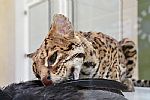
|
A few... |

|
...pictures... |
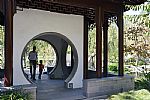
|
...to put somewhere... |
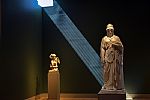
|
...later. |
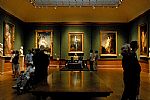
|
The signature piece of the Huntington Library and Botanical Garden in San Marino, CA. He's Blue Boy. And in the last slide you'll find his pal Pinkie. Quotes from the huntington.org website. Photos from a few visits are included here. |
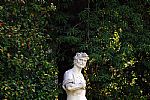
|
"The Huntington Library, Art Collections, and Botanical Gardens is a collections-based research and educational institution established in 1919 by Henry E. and Arabella Huntington. "Henry Huntington, a key figure in the development of Southern California in the early 20th century, was also an active collector of rare books and manuscripts, art, and plants. By the time he established the institution, he and his wife had amassed an extensive collection focusing on British and American history, literature, and art, as well as rare and spectacular plant specimens." Henry Huntington was an early entrepreneur and great investor who made his money in street railways, electric power, and real estate (after inheriting a railroad fortune from his uncle and marrying his uncle's widow.) "By rapidly pouring vast amounts of capital into his triad of interrelated businesses, all critical for regional growth, he achieved a virtual monopoly over the development of many parts of the Los Angeles basin." Notice the difference in tone? This quote is from 'Henry E Huntington and the Creation of Southern California'. |
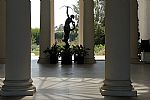
|
The passage from the Conservatory to the Cafe. |

|
The newly reopened residence. |

|
"Opened in October 2005, The Rose Hills Foundation Conservatory for Botanical Science is the cornerstone of a new, multi-phased botanical education center at the Huntington Library, Art Collections, and Botanical Gardens. This striking new building adds a public exhibition and interactive learning space to the existing facilities for botanical research." |

|
"The new conservatory features four distinct "environments" created for different hands-on botanical exhibits including a Tropical Forest Rotunda, Cloud Forest, Carnivorous Plant Bog, and Field Lab. Living plant displays, water features, and interactive learning stations invite active exploration and discovery." |
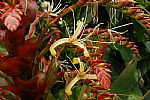
|
These guys live in the cloud forest... |
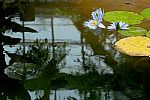
|
...and this is in the middle of the tropical forest. |

|
More. |

|
Looking up into the conservatory dome. That's mist you're seeing. They've taken the Tropical-Cloud-Rain forest ecology quite seriously. It's wet in there! |
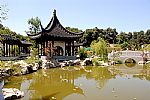
|
"Inspired by the centuries-old Chinese tradition of private gardens designed for scholarly pursuits, Liu Fang Yuan, or the Garden of Flowing Fragrance, combines the scenic beauty of nature with the expressiveness of literature to give deeper meaning to the landscape. A walk through its paths enriches the mind and spirit alike. The Huntington, with its renowned collections of art, rare books, manuscripts, and plants, was founded on this same philosophy by Henry E. Huntington in 1919." |

|
Another view. |
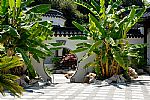
|
The inside courtyard. |
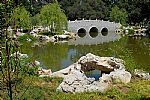
|
"Water (symbolizing the ever-changing) and rocks (the eternal) create harmony in the garden, balancing nature’s yin and yang. Weathered limestone rocks from Lake Tai line the water's edge, evoking the craggy mountains of a Chinese landscape painting. Water creates an added visual dimension to the garden by reflecting the changing moods of the light, clouds, and sky." |
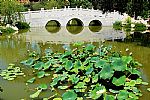
|
Same bridge, different day. |
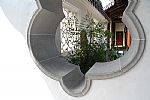
|
Views through windows, an essential feature of a Chinese Garden. |
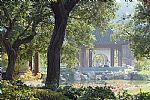
|
A passageway and a serene view of the lake. "Plants and flowers, too, serve a symbolic purpose in a Chinese garden, as well as a decorative one. Certain plants may represent the seasons (peach blossoms for spring, pine for winter), while others stand for attributes such as purity (lotus) or uprightness (bamboo). While form and color appeal to the eye, other senses are engaged by a fragrance wafting in the air, the sound of water falling over stones, or raindrops striking broad leaves." |
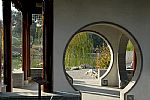
|
Approaching the above from the entrance. |

|
More. |
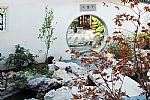
|
When you're standing on the other side of that moon door and looking out to the garden the effect is of 'a window that gathers all things into the human domain.' |
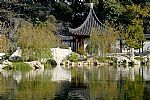
|
The Chinese Garden was built by craftsmen brought from Suzhou, China who fabricated much of the buildings back home and then finished them off while in residence here. They brought all their tools and extra materials for the inevitable new requirement. It is quite a feat of hand made construction and the director's feeling is that such a thing will never be built again. |
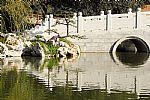
|
I visited several gardens in Suzhou and it is obvious that this garden is very much in the same style. Here's a link to the story of my time in Suzhou. |
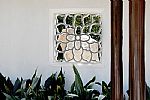
|
There are dozens of this style of window, each different and hand made, the play of shadows and light creating an ever changing view. |
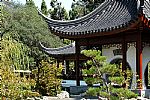
|
The Moon Pavilion. |

|
"Many of China's great garden-builders were wealthy merchants with scholarly interests, and their gardens were places for literary and artistic activities such as poetry, painting, and calligraphy." There are many more interesting views too, for next time. |

|
This is one of the many playgrounds in the Children's Garden. It is such a delight in there. |
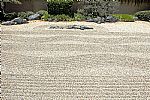
|
The Japanese Garden is very lovely including a furnished home to enjoy, a bonsai pavilion, and more. "When Mr. Huntington asked William Hertrich, his garden superintendent, to look for plants to develop a Japanese garden, Hertrich approached George Marsh, an art collector and importer of Asian art objects. Mr. Marsh had opened a tea garden in Pasadena around 1904, which was not successful commercially. He offered to sell the contents of his establishment: plants, garden ornaments, and Japanese house. "In 1912, seventy men worked daily for 5 months to move the house, plants, and garden ornaments to the Huntington and establish the garden. Later, a Japanese craftsman built the moon bridge and gong tower. In 1968, the Zen court and Bonsai court were opened to the public." |

|
Which one? |

|
Entrance to the Japanese Garden. |
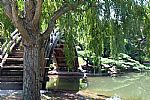
|
From the other side on another day. |

|
It's fun to glance up and find unexpected views of pavilions and statures. |

|
The Library part of The Huntington Library and Botanical Garden. |

|
There are many of these guys around. |
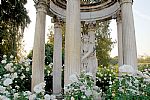
|
She's a beauty. |
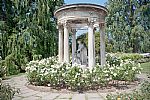
|
Still lovely from further back. |
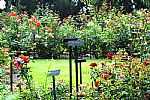
|
A tiny bit of the sprawling rose garden. |
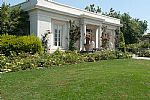
|
The Tea House nestled amid the roses. |
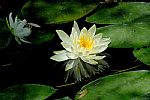
|
Glancing up and glancing down, lovely. |
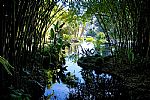
|
More of the lily pond. |
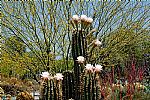
|
"The Huntington Desert Garden is one of the largest and oldest assemblages of cacti and other succulents in the world. Nearly 100 years old, it has grown from a small area on the Raymond fault scarp when in 1907-1908 William Hertrich brought in plants from local nurseries, private residences, public parks, and from collection trips to the Southwest and Mexican deserts." |

|
"Today the two dozen families of succulents and other arid adapted plants have developed into a 10 acre garden display, the Huntington's most important conservation collection, a most important mission and challenge." |
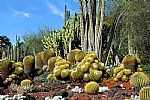
|
More. |
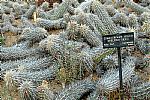
|
More! |
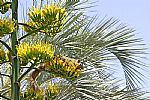
|
Native wildlife finding food. |

|
She's Pinkie to his Blue Boy... |
| Home • USA LA! Home Sweet Home • The Huntington Library and Garden |
© 2014 • WhereTheHeckIsMom.com